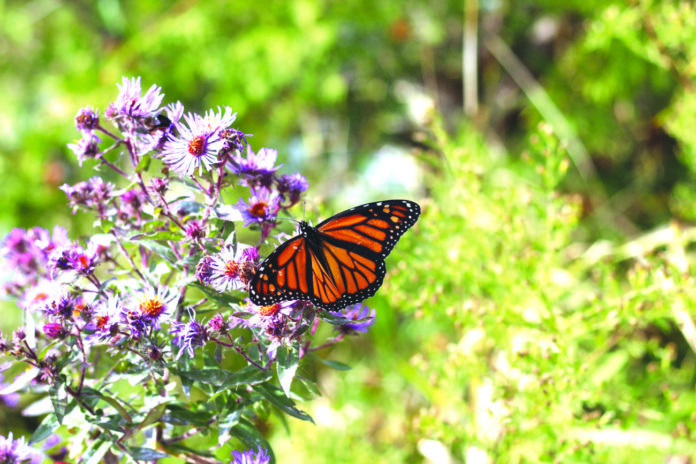Mary Beth Simmons, Cameron County Master Gardener, Texas Certified Nursery Professional
Colorful butterflies are an important addition to a garden, not only because of their beauty but because they help pollinate flowers and vegetables. Attracting them involves serving the needs of all of the life stages of the butterfly:
- Places to lay eggs
- Food plants for the butterfly larvae (caterpillars)
- Places to form cocoons or chrysalides
- Nectar sources for the adults
For best butterfly watching, delegate a part of your yard to these beautiful winged insects. It should be sunny from mid-morning to mid-afternoon. Choose a spot that is protected from strong winds.
Plant native flowering plants. Adult butterflies are attracted to bright-colored blooms that are clustered and have short flower tubes. We have butterflies year round in the Rio Grande Valley, so make sure you have nectar plants blooming at all times. Nectar plants should be planted in the sun but host plants can be planted either in sun or shade.
Plant host plants. Host plants are the plants that caterpillars eat, and caterpillars are very particular about their diet. For example, Monarchs caterpillars eat only milkweed while black swallowtail caterpillars eat dill, parsley, fennel, and carrots. Because tiny caterpillars cannot travel far to find food, a female butterfly will only lay her eggs on the type of plants they can eat.
Give butterflies a place to rest. They need sun to warm their wings and bodies for flight. A few flat stones in your garden will give them space to rest and bask in the sun.
Give them a puddle. Butterflies will congregate on a wet area where they will drink and extract minerals from the wet mud. One way to provide a puddle is to place coarse sand in a shallow pan and then dig the sand-filled container into the soil. Don’t forget to keep this area wet.
Avoid pesticides, even the most mundane like BT. Caterpillars will die after eating a plant that has been treated with pesticides.
For a list of nectar and host plants for the Valley, watch for this column next week.
You can find more information on the web. Two of my favorite sites are North American Butterfly Association (NABA) South Texas http://naba.org/chapters/nabast/ and Texas Butterfly Ranch http://texasbutterflyranch.com/




